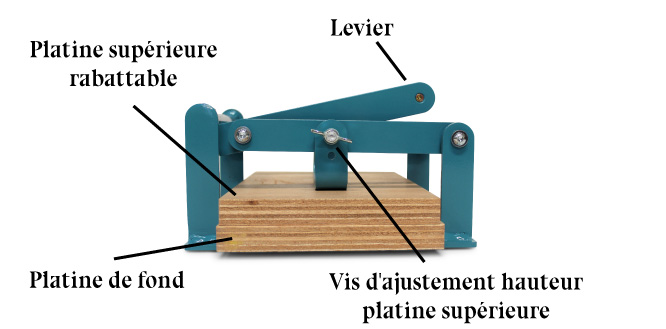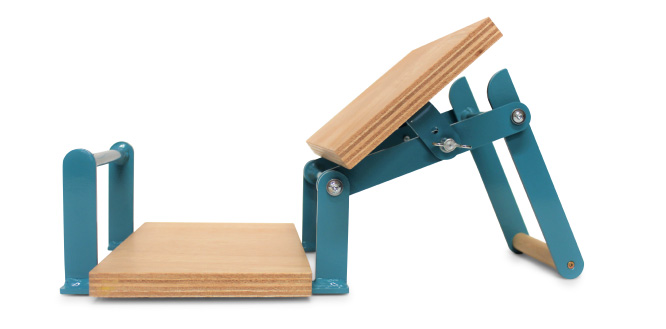
It works very simply:
The printmaker positions the engraved and inked matrix on the platen at the back of the press (with a roller on the relief), then places his sheet of printing paper on the matrix. On top of the printing paper he places a few sheets of lambda paper (thin and smooth) or cardboard or felt or any other flexible material of varying thickness. Finally, he folds down the top plate and applies pressure using the lever.
The sheets of paper (cardboard or felt) placed on top of the printing paper distribute the pressure evenly, compensating for any irregularities in thickness or surface. Note that if this flexible layer is too thick, it will cause the paper to deform and mould itself against the die.

From a mechanical point of view, the pressure is applied to the entire surface of the die. The pressure is therefore very evenly distributed and less significant than in the case of pressure applied by a roller to the matrix/paper assembly. This pressure configuration limits (but does not prevent!) the printing of large flat areas in terms of regularity. The print will certainly have gaps or "hollow" printed areas.
In short, printing on a lever press is recommended for matrices with few solid areas, or above all with raised areas such as lines, dots and other patterns or graphic elements.
To return to the point that flexibility on the back of the paper improves the contact of the paper with the matrix, the same applies to the flexibility of the matrix itself: a thick, flexible matrix guarantees better contact with the paper and therefore a uniform print with no gaps.
It is possible to print on a variety of types of matrix, from linoleum to wood, rubber or gum. If required, the top plate can be adjusted in height. Two positions are possible.
To conclude on the use of lever presses: they are most effective for dies engraved in a thick, flexible material and for designs or motifs without too many wide flat areas.
Note that in some cases, particularly textile printing where the fluidity of the fabric makes it difficult to position the fabric correctly on the die, it is possible to first place the piece of fabric at the bottom of the machine and then on top of the inked die. As mentioned above, a flexible layer can be placed on the back of the fabric, or first on the bottom plate of the machine.
Mechanically, it's the same thing: the die and the substrate to be printed are always sandwiched between the two platens.
Short video:


